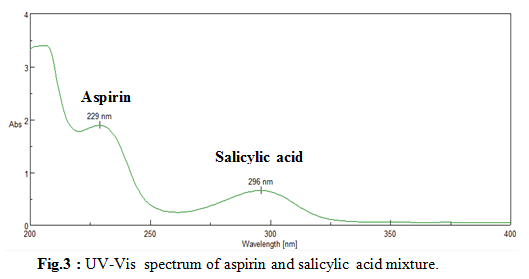Take aspirin (acetylsalicylic acid) and hydrolyze it with NaOH. This results in sodium acetylsalicylate and water. I think the sodium is held on with an ionic bond, so it is really salicylate dianions that are the important thing in the solution.
This is then diluted to several different concentrations. Using UV-VIS, the absorbance of these solutions are measured at 295 nm. Then a calibration line is plotted, that is, absorbance verse concentration. It will be a (pretty much) straight line according to the Beer–Lambert law. You can use this calibration line to calculate the concentration of a similar, but unknown, solution from its absorbance.
Why was 295 nm a good choice of wavelength to measure at?
The only idea I currently have is that at 295 nm there is a distinct difference between the absorbance of acetylsalicylic acid and salicylic acid. Apparently, the salicylic acid has a strong response at 295 nm, whereas the acetylsalicylic acid does not. However, I am not sure this is exactly relevant, since I'm not sure I have salicylic acid in my solution.
If I am on the right track here, then I have a follow-up question:
Apparently the lambda-max for salicylic acid is 302 nm. So, why would 295 nm be used in this experiment instead of 302 nm? Or, would anything between, say, 295 nm and 310 nm be just as good?

